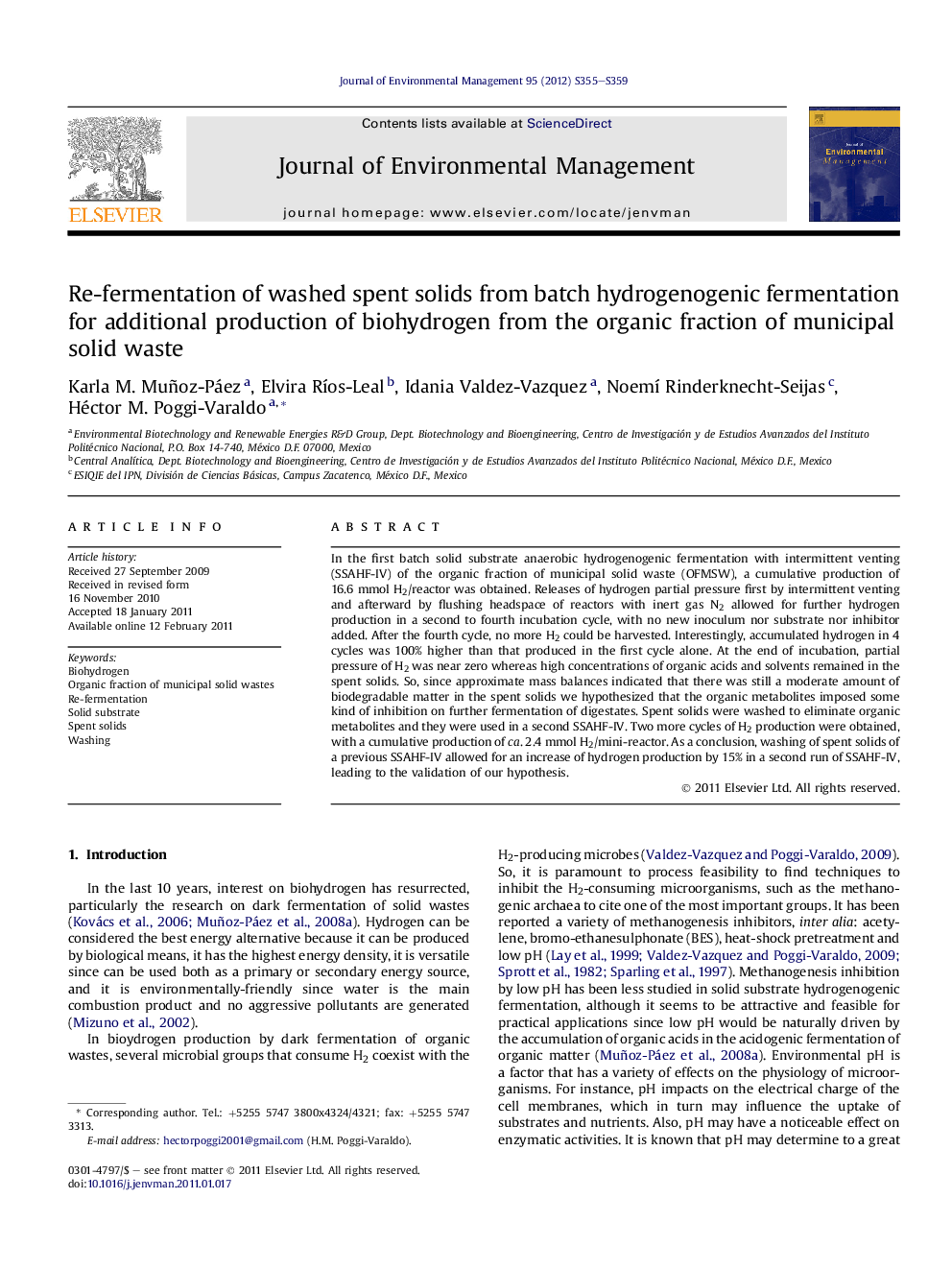| Article ID | Journal | Published Year | Pages | File Type |
|---|---|---|---|---|
| 1057079 | Journal of Environmental Management | 2012 | 5 Pages |
Abstract
In the first batch solid substrate anaerobic hydrogenogenic fermentation with intermittent venting (SSAHF-IV) of the organic fraction of municipal solid waste (OFMSW), a cumulative production of 16.6Â mmol H2/reactor was obtained. Releases of hydrogen partial pressure first by intermittent venting and afterward by flushing headspace of reactors with inert gas N2 allowed for further hydrogen production in a second to fourth incubation cycle, with no new inoculum nor substrate nor inhibitor added. After the fourth cycle, no more H2 could be harvested. Interestingly, accumulated hydrogen in 4 cycles was 100% higher than that produced in the first cycle alone. At the end of incubation, partial pressure of H2 was near zero whereas high concentrations of organic acids and solvents remained in the spent solids. So, since approximate mass balances indicated that there was still a moderate amount of biodegradable matter in the spent solids we hypothesized that the organic metabolites imposed some kind of inhibition on further fermentation of digestates. Spent solids were washed to eliminate organic metabolites and they were used in a second SSAHF-IV. Two more cycles of H2 production were obtained, with a cumulative production of ca. 2.4Â mmol H2/mini-reactor. As a conclusion, washing of spent solids of a previous SSAHF-IV allowed for an increase of hydrogen production by 15% in a second run of SSAHF-IV, leading to the validation of our hypothesis.
Related Topics
Physical Sciences and Engineering
Energy
Renewable Energy, Sustainability and the Environment
Authors
Karla M. Muñoz-Páez, Elvira RÃos-Leal, Idania Valdez-Vazquez, Noemà Rinderknecht-Seijas, Héctor M. Poggi-Varaldo,
